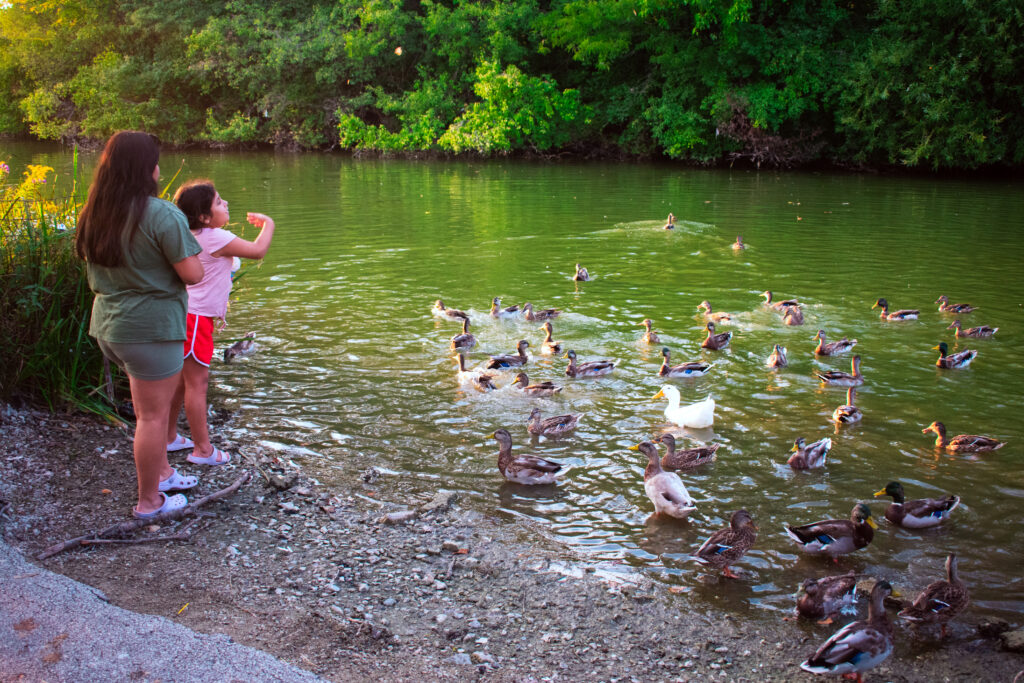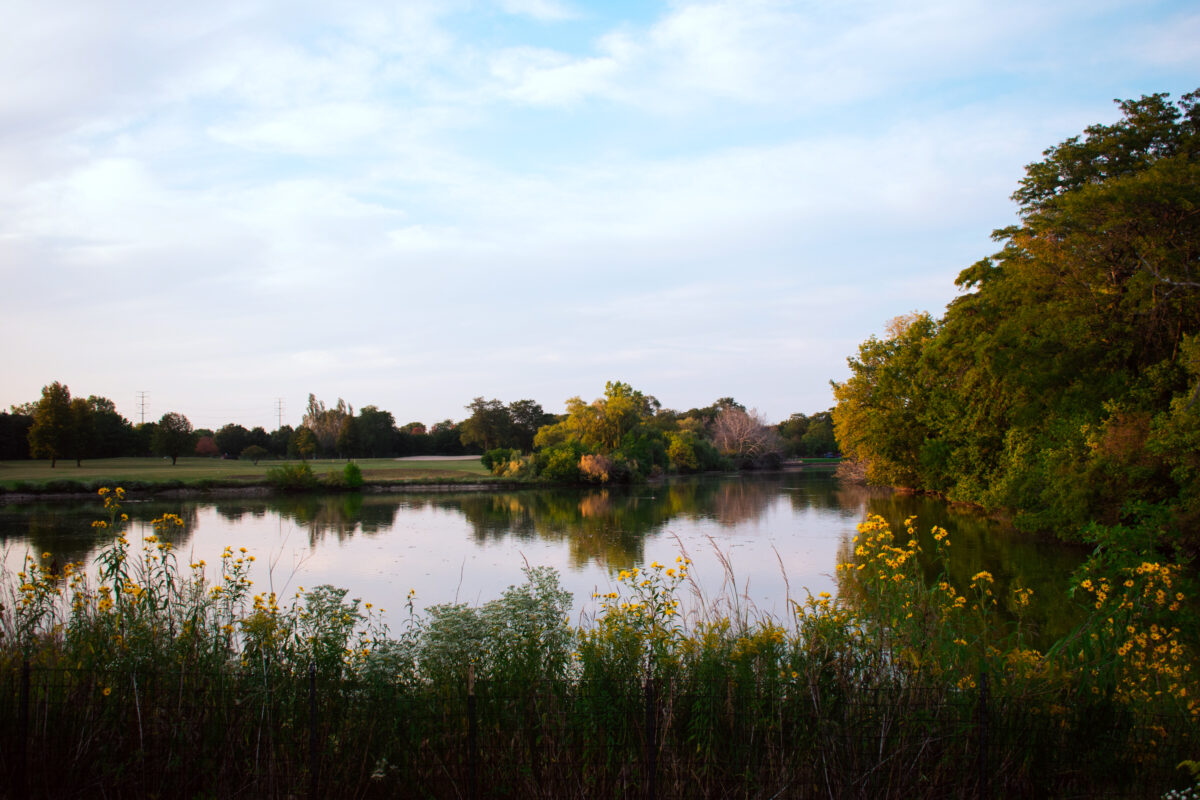Like many other longtime Southwest Siders, I grew up frequenting Marquette Park in Chicago Lawn to gather with family, feed the ducks, or check out the former rose garden.
As the COVID-19 pandemic rages on, the park continues to serve as a reliable space for me to gather safely with friends. We go on nature walks and mini-adventures, each time noticing something different: an odd-looking duck, graffiti tags with culturally relevant statements, or an improvised path leading to a secretly stunning view.
Thanks to groups like the West Lawn Conservation Club and Chicago BIPOC Birders I have become better acquainted with the plants and birds that inhabit the park such as the black-crowned and great blue herons that can often be spotted catching fish with pinpoint precision.
On any given summer day, you’ll find the 315.18 acres of land being utilized in many ways: compadres fish at the lagoon, families gather for soccer games at the various fields, kids and adults play basketball at the courts, and different groups host community or private events.
On especially hot days, the tree canopy and lagoon offer respite from industrialization and the heat island effect of the Southwest Side. My favorite trees are the willows that lean towards the lagoon as if staring at their reflection. I especially like visiting in the evening when the sun is setting, painting the tops of trees pink and illuminating the surface of the lagoon with its glow.
I recently learned that at the center of the park lies a precolonial piece of land known as the Ashburn Prairie. The three-and-a-half acre prairie was transplanted from its original location on 87th and Kedzie in 1993 as a preservation effort. This got me wondering how the park’s history shapes how we relate to it.
Known as the largest park on the Southwest Side, Marquette is also marked by a racist history. Named after “explorer and missionary” Father Jacques Marquette, the park’s racist and violent history—along with the rest of Chicago’s—can be dated back to the colonization of the Americas. The name, derived from Jacques Marquette’s “exploration” of the Mississippi River with Louis Joliet, disregards the knowledge and relationships to the land that exists among native people.
According to the Park District’s website, Marquette and other Chicago parks were created by the South Park Commission, which worked to “acquire” the land between 1878 and 1909.

“Superintendent J. Frank Foster conceived the new parks as beautifully landscaped ‘breathing spaces’ that would provide educational and social services to the City’s congested immigrant neighborhoods,” the website reads. The immigrant communities that these parks were originally designed to serve were composed of central, southern and eastern Europe whites.
When Martin Luther King, Jr. visited on August 5, 1966, he was met with a crowd of angry white residents that physically attacked him and other peaceful protesters. MLK had come to Chicago Lawn to advocate for open housing, but was met by hostility from what was at the time a predominantly white neighborhood. In 2016, a memorial was unveiled on the corner of S. Kedzie Ave. and W. Marquette Rd. to commemorate the fifty-years since the event. The memorial was sponsored by the Inner-city Muslim Action Network located on 63rd and California.
According to the website, the process of realizing the plan for Marquette Park was slow, “due to drainage problems and the site’s large size.” I wonder what the process of “acquiring” so much land looked like, and what the land was like originally.The Ashburn Prairie contains a wide range of native species as well as rich soil. If I had to choose one aspect of the park I cherish the most, this would be it. The Ashburn Prairie serves as a reminder that we are still on unceded and occupied Indigenous land.

